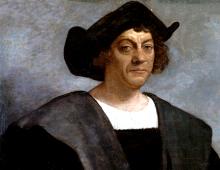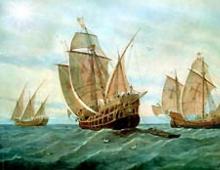Fortresses and estates of Ingria excursions. Group tour "Fortresses and estates of Ingermanland"
Ingria is named after the wife of Yaroslav the Wise Ingigerd (all historical information is on the guide's conscience). The princess belonged to the Ladoga Jarlstvo, which existed for a hundred years.
The area on the territory of St. Petersburg was quite densely populated before Peter - five thousand people. They called the Fontanka Kikiyoki, Kalina (Lyakushachya, Mutnaya). The main highways of St. Petersburg (except for Nevsky - its captured Swedes cut through under Peter) - on the site of the old Novgorod roads.
In general, we have an excursion, mainly along the old roads. The Chukhonian Izhora people lived in our area, the first mention was in the 12th century. In the west they are called ingrams, a side shoot of Karelians.
Chukhonians - Setto Estrons, Izhors, Karelians, all (Vepsians). All are Orthodox, their language differs from Finnish approximately like Croatian from Russian.
The first stop, in an hour, along the Gostilitsky highway. The abandoned estate and the crumbling Razumovskys (relatives of the Ukrainian swineherd, with whom Elizaveta Petrovna fell in love so much that she secretly married him) - Hotels(by the name of the river).
In Gostilitsy - the crumbling estate of the Razumovskys, on the site of the Minich estate (one of the few efficient specialists hired by Peter in Europe). Under Soviet rule, there was a millionaire collective farm in those places, with barracks built for students who came to buy potatoes. Outbuildings of the 18th century that have grown into the ground are boarded up, but at least under a roof. The master's house is destroyed. It suffered during the war, but worst of all - after perestroika, when locals began to use it as a quarry. At least the church has been rebuilt. The park is running, the greenhouse is destroyed.
Voronino.
The estate belonged to the Cherkasskys, then the Sheremetyevs and the Engalychevs. A small and relatively well-preserved estate with a stable - on the owner's side and with a food warehouse - with the hostess ..
Remarkable are the remains of the park - lindens planted in a "basket" and a multi-stemmed solitaire oak. Such oaks were worshiped in pagan times, then the priests hung icons of Elijah the Prophet on them.
The Russian park - near the house is regular, French, the further you go, the more it becomes landscape, English, gradually merging with the landscape. Completely abandoned parks are sometimes found by imported trees. In our area, the guest is larch. Although the forest is beautiful, these trees had to be relocated from Siberia.
From the highway near Voronino beautiful view at nuclear power plants in Pine forest.
Koporye. famous historical place, where the fortress of the Teutonic Knights was destroyed by Alexander Nevsky (and his brother Andrei).
Initially, under the knights, it was wooden, then again wooden, but a year later it was made of stone through the efforts of Dmitry Nevsky's son. Dmitry was expelled from Novgorod, fearing that his brother and the Tatars would come to sort things out with him - the brothers did not get along well and did not disdain to involve the Tatars in family squabbles.
The Novgorodians demolished the fortress, and then decided that the guard would be useful to them, and rebuilt it again. The border garrison was small, the main task was to inform Novgorod about the attack, and the townspeople would have time to hide women, children and cattle in the swamps. Later, the border was pushed back, and the fortress peacefully decayed in the rear. The photographs show the remains of the church and the office.
The guide believes that Koporye is the second stone fortress after Ladoga on the territory of Russia, Ukraine and Belarus. In the north, fortresses were built from European knights - stone, more solid than from the Tatar cavalry. They built, trying to make the most of natural fortifications - steep banks of rivers, hills, ravines.
The fortresses were rebuilt after the advent of artillery - old stone throwers hit 100-150 meters. By that time, the Koporye fortress, built on and from limestone, was outdated. If a stone, much less a cast-iron core hits a stone, it will shatter into sharp fragments, so the fortresses are rebuilt into brick crumbling sand.
The "secret tower" is not a hiding place, but a well. The fortress is very picturesque, especially from the side of the moat, from where the attack was not expected.
In the fortress there is the only genuine lowered grate-gersa that has survived at least partially in Russia, rolled up in cement with some kind of radish. Such castles are typical for European castles, and in Russia now only remakes. The entrance was later fortified with towers, the bridge - from the 19th century, the cat - from the 21st, as well as role-playing games.
Then we passed through the lands of the German barons. The primacy acted here, so the possessions were not split up and did not change owners. The estate belonged to the Wrangels for centuries, they served both the Poles, the Swedes, then the Russian emperors - depending on which state the lands belonged to. The guide gave an explanation of Nicholas I, why he loves German nobles more than Russians: "Russian nobles serve Russia, German nobles serve me."
A little more about nobles and prices. A man brought a master three hundred rubles a year (!), And that's how much he cost, an adult peasant woman cost fifty, an untrained girl - an extra mouth, two or three rubles, or even a ruble. A wealthy nobleman - from a hundred souls, rich from a thousand. The estates were divided, service (especially in the guards) cost a lot of money, for the sake of service, dowry, and revelry, estates were mortgaged. The emperors took many measures to save the nobility from ruin, but before the reform, most of the peasants were mortgaged and belonged not so much to the landlords, so much to the treasury.
Kingisepp (formerly Yamburg). stands on the river Luga. The fortress was torn down by the Swedes, several old buildings remained in the city (Gostiny Dvor is not bad, but we did not stop there) and a church built according to the design of Rinaldi. At the church there are three limestone crosses, remnants of pagan worship of stones. Nearby I liked the house (it seems to be a school) of the beginning of the century - if I am not convicted of ignorance, then historicism is pseudo-Gothic.
AT Ivangorod we first drove to the Trinity Church, laid by a banker
Acquaintance with the family estates of Ingermanland (Gostilitsy - the estate and palace of the Razumovskys) and with the ancient Russian fortifications-fortresses: Koporskaya, Ivangorodskaya; Catherine's Cathedral and the ruins of the fortress in Yamburg. Ingermanlandia - this beautiful word is called the surroundings of St. Petersburg. In a narrower sense, Ingria is the southern coast of the Gulf of Finland, along which the tour will take place. The Finnish tribes who lived here since ancient times called this region - Inkeri maa - "beautiful land". In the 9th-11th centuries, the coast of the Gulf of Finland was settled by Slavs-Novgorodians. In the 11th-15th centuries, the “beautiful land” was part of the Novgorod state, and from the end of the 15th century it became part of the unified Russian state. In the XIII-XVI centuries, there was a war between Russia and Sweden for the "beautiful land". For the defense of the frontiers, ancient fortresses were built: Ivangorod, Koporye and Yam. The Swedes took possession of the land of Inkeri Maa in the Time of Troubles (1617) and named it "Ingermanland". In 1703, Peter the Great conquered these lands and built St. Petersburg here. The recaptured neighborhoods of the new capital were called the Ingermanland province. "Beautiful land" fell in love with the Russian noble nobility. Here, closer to the imperial capital, they built their estates in the XVIII-XIX centuries. In the 20th century, the region survived the trials of the Civil and Great Patriotic Wars. The tour introduces the forgotten manor life of the nobles and the majestic history of ancient fortresses. The journey will begin from the famous Peterhof road - on this tract, on the shores of the ancient sea, imperial palaces and estates of the Petersburg nobility. We will visit the Gostilitsa estate - one of the fragments of the bygone noble life, the place where Russian aristocrats lived: the Razumovskys, Golitsyns and Potemkins. In the middle of the manor park, an old mansion, which suffered during the war years, is waiting for its restoration. On the background picturesque ruins rises the picturesque church of the 18th century, restored today by the descendants of the owners of the estate. Koporye - impregnable fortress above the cliff, keeps the memory of the Russian wars with the Swedes - from Alexander Nevsky to Peter the Great. It was built and rebuilt in the 13th and early 16th centuries. The city of Kingisepp is the ancient Russian fortress of Yam (Swedish name is Yamburg), where the ramparts and St. Catherine's Cathedral, a delightful creation of the great Antonio Rinaldi, have been preserved. Ivangorod is the eternal guardian of Russian borders. It was placed by the Grand Duke of All Russia Ivan III the Great on the border with the lands of the Livonian Order. There was also a line with the Kingdom of Sweden, and now, as in the old days, Ivangorod stands on the Estonian border, on the banks of the Narova River. From the high fortress walls you can see the Estonian Narva. To visit Ivangorod you need a passport!!!



